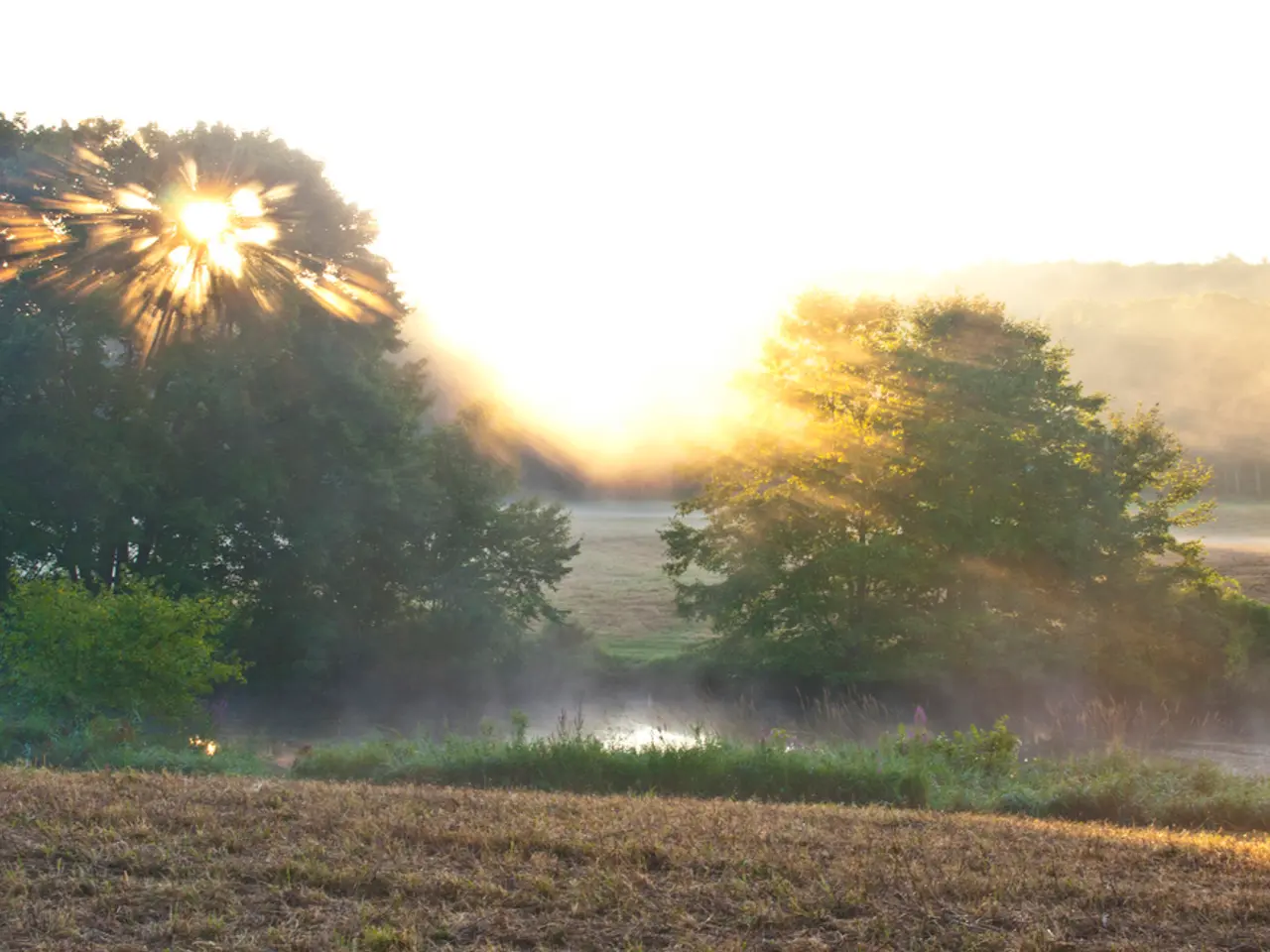United Kingdom Gardeners Ponder a Green and Long-term Approach: Forest Gardens
Martin Crawford's forest garden in Dartington, Devon, has become an inspiration for gardeners and farmers across the UK, offering a blueprint for reducing labour, boosting biodiversity, and growing food resiliently. This unique, semi-wild space, neither a dense forest nor an orchard, but something in between, is a testament to the potential of forest gardens, also known as food forests.
Forest gardens are structured in layers, with tall trees, shrubs, perennials, and ground cover working together to create a self-sustaining ecosystem. Unlike conventional farming, forest gardens fertilize themselves and require minimal cultivation, making them an attractive option for those seeking a low-maintenance approach to food production.
The timescale for a forest garden is decades, not just a single season. This long-term perspective is essential for the system to mature into a self-supporting ecosystem. Despite setbacks, such as vandalism, the Community Food Forest in Sidmouth is now in its third year, demonstrating the resilience of this approach.
Designing a forest garden requires deeper thought than planting a conventional veg patch, as it involves working with relationships between plants. Robert Hart, a British pioneer of temperate forest gardening, is seen as reintroducing something that has been with us for a long time.
Tidiness always costs energy, a lesson worth absorbing in a world where energy, both human and fossil fuel derived, is increasingly precious. Forest gardens, with their slightly unruly abundance, feel alive in a way that tidy borders often don't. This natural beauty offers a sense of wildness and the hum of life, making them places of delight for visitors.
British forest gardens can't simply copy tropical models due to the weaker sunlight. Careful spacing and consideration are required to ensure fruit ripens properly. Martin Crawford emphasizes vertical productivity for UK gardeners working with limited space, layering trees, shrubs, and perennial crops to make efficient use of sunlight and soil.
A mini food forest only requires a square meter, no bigger than a compost bin. This small-scale approach makes forest gardening accessible to everyone, regardless of the size of their outdoor space.
Martin Crawford's observation is that forest gardens reconnect people with nature. Visitors to his forest garden range from permaculture advocates to traditional gardeners, some enchanted by its beauty, others unsettled by its "untidiness." However, the benefits of forest gardens are undeniable, from year-round diverse food production to biodiversity restoration and climate change mitigation.
Key principles of creating and maintaining a food forest or forest garden involve designing a resilient, self-sustaining ecosystem that mimics natural forest structures to produce diverse, edible, and useful plants year-round. This includes integrating multiple layers of vegetation, such as canopy trees, shrubs, herbs, ground cover, root crops, and vines, with a focus on perennial, deep-rooted plants that improve soil health and conserve water. Maintaining this system relies on permaculture principles like diversity, natural succession, soil cover, and minimal external inputs, fostering an environment where plants, animals, and microorganisms support each other.
The benefits of food forests are substantial, including year-round diverse food production, soil rejuvenation and conservation, climate change mitigation, biodiversity restoration, long-term resilience, and low maintenance compared to conventional farming. Additionally, food forests provide social and educational benefits, such as reconnecting people with nature and sustainable food production, which can promote health, wellbeing, and environmental stewardship.
In summary, food forests are regenerative agroecosystems designed to sustainably produce food while improving ecological health, enhancing farmer livelihoods, and combating environmental challenges. As we face increasing challenges related to climate change, food security, and biodiversity loss, the principles of forest gardening offer a promising solution for a more sustainable future.
[1] Crawford, M. (2017). Creating a Forest Garden: Working with Nature to Grow Edible Crops. Timber Press. [2] Hart, R. (2002). A Forest Garden: A Practical Guide to Planting and Management. Permanent Publications. [3] Hart, R. (2013). The Edible Forest Garden: Ecological Design and Practice for Temperate Climate Permaculture. Permanent Publications. [4] Mollison, B. (1997). Introduction to Permaculture. Tagari Publishing. [5] Tilman, D., & Lehman, C. (2012). The design and management of perennial polycultures. Trends in Ecology & Evolution, 27(10), 605-613.
- Home-and-garden enthusiasts and sustainability advocates might find the concept of a forest garden appealing, as it offers a self-sustaining lifestyle that requires minimal maintenance, promotes biodiversity, and enhances food resilience.
- Gardening in a forest garden doesn't just involve planting; it requires a thoughtful approach that focuses on creating relationships between plants and mimicking natural forest structures, fostering a sustainable living environment that benefits both humans and nature.




